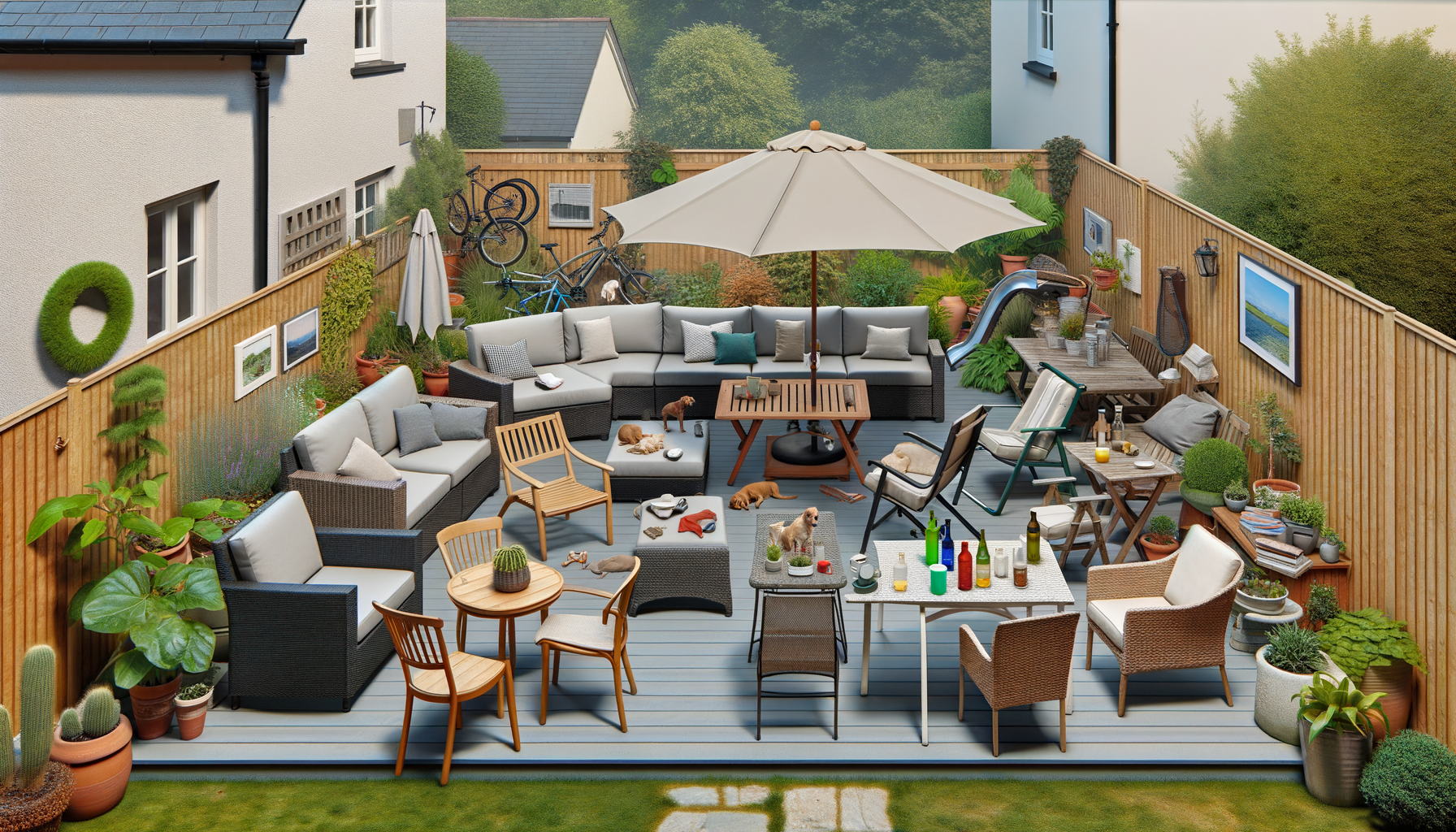
Patio Furniture Buying Guide: 7 Common Mistakes That Can Cost You When Upgrading Your Backyard or Patio on a Budget
Introduction to Patio Furniture
Transforming your outdoor space into a comfortable and inviting area can be achieved through the right patio furniture. Whether you’re looking to create a serene retreat or a lively gathering spot, the choices you make can significantly impact the function and aesthetics of your backyard or patio. However, upgrading your outdoor area on a budget requires careful consideration to avoid costly mistakes. In this guide, we’ll explore common pitfalls in selecting patio furniture and provide insights to help you make informed decisions.
Understanding Material Durability
One of the most crucial aspects of selecting patio furniture is understanding the durability of different materials. Outdoor furniture is exposed to various weather conditions, from intense sunlight to heavy rain. Therefore, choosing materials that can withstand these elements is essential. Common materials include wood, metal, wicker, and plastic, each offering unique advantages and disadvantages.
Wooden furniture, for example, provides a classic and natural look but may require regular maintenance to prevent weather damage. Metal furniture, such as aluminum or steel, can offer a sleek appearance and is often treated to resist rust. Wicker furniture is lightweight and stylish but may not hold up well in harsh weather unless specifically designed for outdoor use. Finally, plastic furniture is budget-friendly and low-maintenance, but it may not offer the same aesthetic appeal as other materials.
When selecting materials, consider your local climate and how much maintenance you’re willing to perform. Investing in weather-resistant materials can save you money in the long run by reducing the need for replacements and repairs.
Prioritizing Comfort and Functionality
While aesthetics are important, comfort and functionality should not be overlooked when choosing patio furniture. Consider how you plan to use your outdoor space. If you envision hosting dinner parties, a large dining table with comfortable chairs might be essential. For a more relaxed setting, consider lounge chairs or a sectional sofa that encourages leisurely conversations.
Comfortable seating often includes features such as cushions and ergonomic designs. When selecting cushions, look for those made with outdoor-friendly fabrics that resist fading and mildew. Additionally, think about the versatility of your furniture. Pieces that can be easily rearranged or serve multiple purposes, like an ottoman that doubles as a coffee table, can enhance the functionality of your space.
Ultimately, the goal is to create an outdoor area that meets your needs while providing a comfortable and inviting atmosphere for you and your guests.
Space Planning and Layout Considerations
Effective space planning is crucial to maximizing the use of your outdoor area. Before purchasing patio furniture, take measurements of your space to ensure that your chosen pieces will fit comfortably without overcrowding. Consider the flow of movement and how people will navigate the area. Leave enough room for pathways and ensure that furniture placement allows for easy access and interaction.
Creating distinct zones within your patio can enhance functionality. For example, designate separate areas for dining, lounging, and cooking if you have a grill. This approach can help you select the right furniture for each purpose and ensure that your outdoor space feels cohesive and organized.
Additionally, consider the orientation of your furniture in relation to the sun and shade. Positioning seating in shaded areas or adding umbrellas can provide relief from direct sunlight, making your patio more comfortable during hot days.
Budget-Friendly Strategies for Outdoor Furniture
Upgrading your patio on a budget doesn’t mean sacrificing quality or style. There are several strategies you can employ to find affordable yet high-quality patio furniture. One approach is to shop during sales events or off-season when retailers often offer discounts on outdoor furniture.
Consider exploring second-hand options, such as thrift stores or online marketplaces, where you can find gently used pieces at a fraction of the cost. DIY projects can also be a cost-effective way to personalize your outdoor space. For instance, you can refurbish old furniture with a fresh coat of paint or create your own cushions using outdoor fabric.
Another budget-friendly strategy is to prioritize essential pieces first and gradually build your collection over time. By focusing on key items that serve multiple purposes, you can create a functional and stylish patio without overspending.
With careful planning and creativity, you can transform your outdoor area into a welcoming retreat that suits your budget and lifestyle.